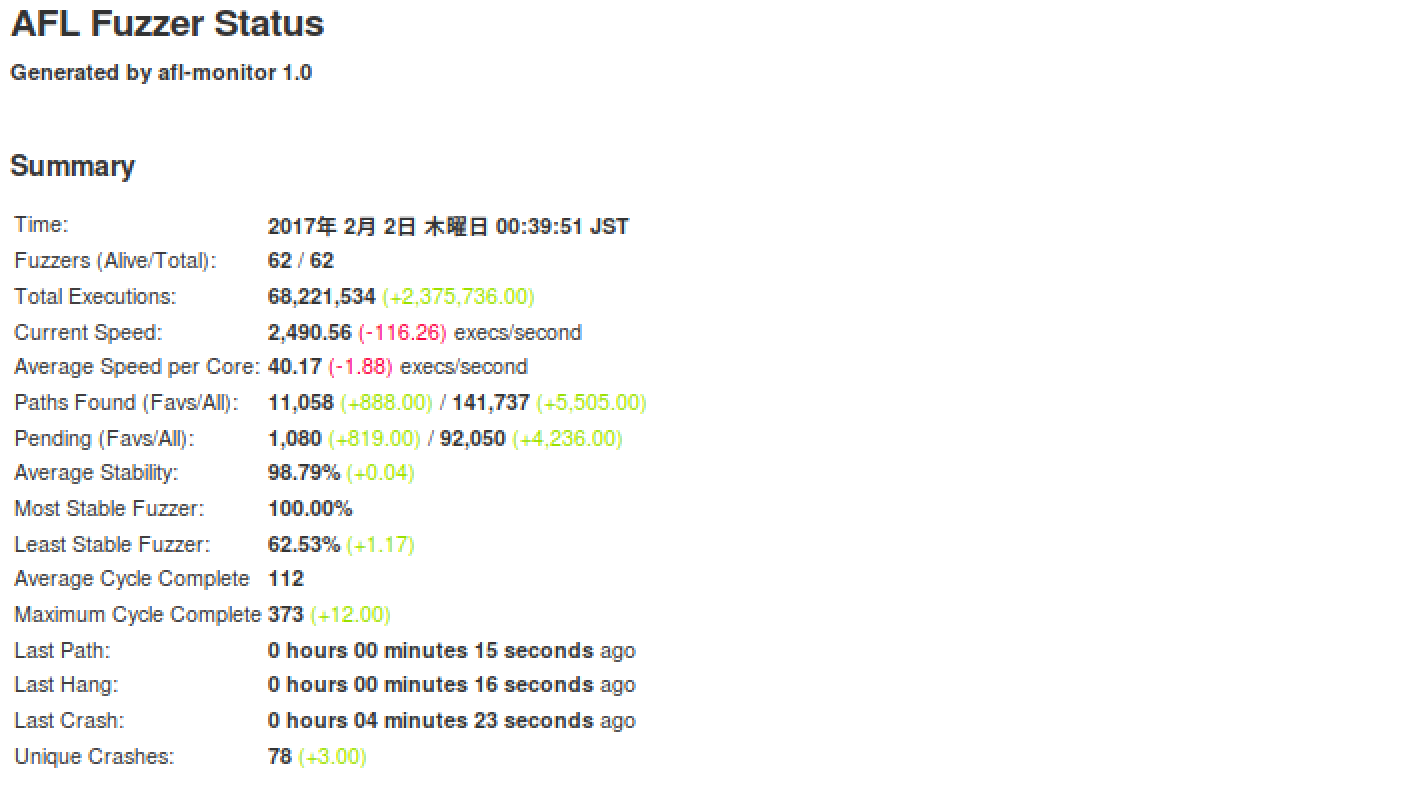Awesome
afl-monitor
Extended monitoring and reporting tool for AFL
This program processes a findings directory generated by afl-fuzz and displays the findings in various formats.
Usage
./afl-monitor [-n | --nocolor] [-c | --commandLine] [-v | --verbose] [-h | --html output_directory] [-e | --execute command] [-r | --recursive second_count] findings_directory
The findings_directory parameter should point to an existing findings directory containing one or several state directories for any active or stopped instance of afl-fuzz.
Options
-n | --nocolor Suppresses color output.
-c | --commandLine
Output to the command line (can be used with -h)
-v | --verbose
Show per-fuzzer statistics in commandline mode and Per-Fuzzer graphing in HTML mode.
-h | --html
Output in HTML format. output_directory must be an empty directory in which the output files will be saved. Will generate 1 index.html file and several plot images.
-e | --execute
Executes the provided command (use quotes if using arguments) and passes the commandline output via stdin (pipe) if a new crash is detected.
-r | --recursive
Re-runs this script with all provided arguments every 'second_count' seconds.
Usage Examples
./afl-monitor -c -v findings/ Display colored status information summaries and per-fuzzer stats on the command line.
./afl-monitor -g graphs/ -c -n findings/ Display summary information as HTML and uncolored console output.
./afl-monitor -c -e send_push_message -r 60 findings/ Generate summary stats once a minute and display them on the command line. If a new crash was detected since the last run, pipe the summary into send_push_message (placeholder example).
Installation
Place afl-monitor anywhere in your file system and execute it. Requires Python 2.7.
Screenshots
Console Summary

Console Per-Fuzzer Output

HTML Summary

HTML Per-Fuzzer Output
